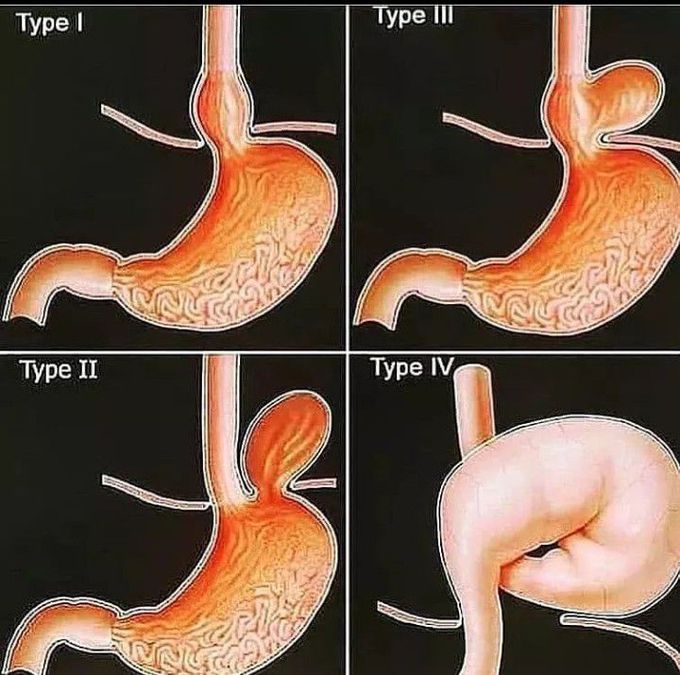


Hiatal hernia
There are two main types of hiatus hernia (although they may co-exist): sliding hiatus hernia (>90%) rolling (para-esophageal) hiatus hernia (<10%) Some divide them into four types: type 1: sliding hiatal hernia (~95%) type 2: paraesophageal hiatal hernia with the gastro-esophageal junction in a normal position type 3: mixed or compound type, paraesophageal hiatal hernia with displaced gastro-esophageal junction type 4: mixed or compound type hiatal hernia with additional herniation of viscera Sliding hiatus hernia This is the most common type of hiatus hernia (~90%). The gastro-esophageal junction (GEJ) is usually displaced >2 cm above the esophageal hiatus. The esophageal hiatus is often abnormally widened to 3-4 cm (the upper limit of normal is 1.5 cm). Under fluoroscopy, if >3 gastric folds are seen above the hiatus, this is suggestive of a sliding hiatus hernia. Rolling (paraesophageal) hiatus hernia The rolling (paraesophageal) hiatus hernia is much less common than the sliding type. The GEJ remains in its normal location while a portion of the stomach herniates above the diaphragm. Mixed rolling and sliding hiatus hernia The mixed or compound hiatus hernia is the most common type of paraesophageal hernia. The GEJ is displaced into the thorax with a large portion of the stomach, which is usually abnormally rotated.

